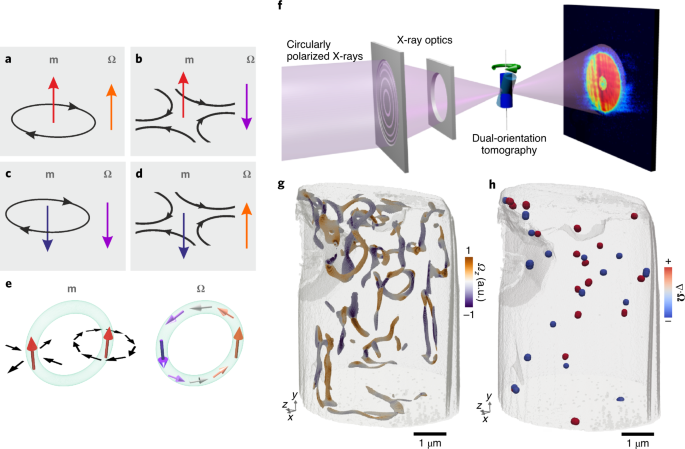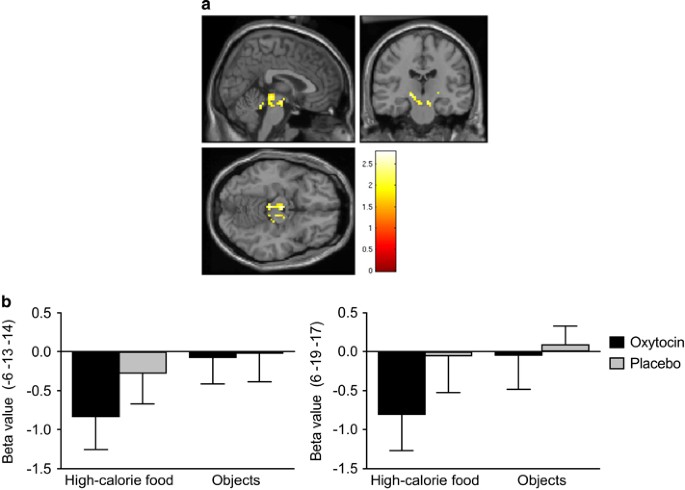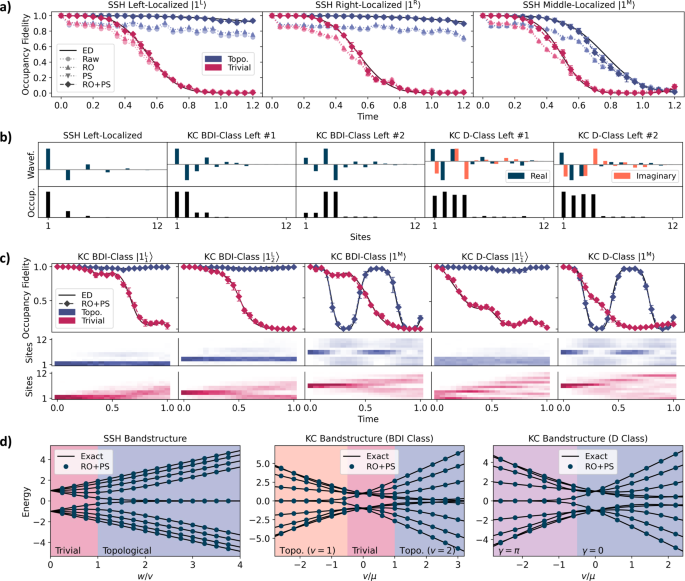
- Select a language for the TTS:
- UK English Female
- UK English Male
- US English Female
- US English Male
- Australian Female
- Australian Male
- Language selected: (auto detect) - EN
Play all audios:
Letter Published: 30 November 2020 Experimental observation of vortex rings in a bulk magnet Claire Donnelly ORCID: orcid.org/0000-0002-9942-24191,2,3, Konstantin L. Metlov ORCID:
orcid.org/0000-0002-3929-56654,5, Valerio Scagnoli ORCID: orcid.org/0000-0002-8116-88702,3, Manuel Guizar-Sicairos ORCID: orcid.org/0000-0002-8293-36343, Mirko Holler3, Nicholas S.
Bingham2,3, Jörg Raabe ORCID: orcid.org/0000-0002-2071-68963, Laura J. Heyderman ORCID: orcid.org/0000-0003-3843-66112,3, Nigel R. Cooper ORCID: orcid.org/0000-0002-4662-12541 &
…Sebastian Gliga ORCID: orcid.org/0000-0003-1729-10703 Show authors Nature Physics volume 17, pages 316–321 (2021)Cite this article
7523 Accesses
131 Altmetric
Metrics details
Subjects Characterization and analytical techniquesFerromagnetismMagnetic properties and materialsTopological defects AbstractVortex rings are remarkably stable structures that occur in a large variety of systems, such as in turbulent gases (where they are at the origin of weather phenomena)1, fluids (with
implications for biology)2, electromagnetic discharges3 and plasmas4. Although vortex rings have also been predicted to exist in ferromagnets5, they have not yet been observed. Using X-ray
magnetic nanotomography6, we imaged three-dimensional structures forming closed vortex loops in a bulk micromagnet. The cross-section of these loops consists of a vortex–antivortex pair and,
on the basis of magnetic vorticity (a quantity analogous to hydrodynamic vorticity), we identify these configurations as magnetic vortex rings. Although such structures have been predicted
to exist as transient states in exchange ferromagnets5, the vortex rings we observe exist as static configurations, and we attribute their stability to the dipolar interaction. In addition,
we observe stable vortex loops intersected by point singularities7 at which the magnetization within the vortex and antivortex cores reverses. We gain insight into the stability of these
states through field and thermal equilibration protocols. The observation of stable magnetic vortex rings opens up possibilities for further studies of complex three-dimensional solitons in
bulk magnets, enabling the development of applications based on three-dimensional magnetic structures.
Access through your institution Buy or subscribe This is a preview of subscription content, access via your institution
Access options Access through your institution Additional accessoptions: Log in Learn about institutional subscriptions Read our FAQs Contact customer support Fig. 1: Measuring and reconstructing the magnetic structure and magnetic vorticity within a
GdCo2 pillar.Fig. 2: Structure of a vortex ring with circulating magnetic vorticity.Fig. 3: Structure of a vortex loop containing magnetization singularities.Fig. 4: Magnetic vorticity plots
measured for a similar micropillar at remanence showing the effect of different field histories. Similar content being viewed by others Controlled creation and decay of singly-quantized
vortices in a polar magnetic phase Article Open access 12 March 2021 Vortex phases and glassy dynamics in the highly anisotropic superconductor HgBa2CuO4+δ Article Open access 24 June 2020
Vortex confinement through an unquantized magnetic flux Article Open access 06 September 2024 Data availability
Experimental data and analysis codes used for this manuscript can be found at https://doi.org/10.5281/zenodo.4041745.
References Yao, J. & Lundgren, T. Experimental investigation of microbursts. Exp. Fluids 21, 17–25 (1996).
Article Google Scholar
Kilner, P. J. et al. Asymmetric redirection of flow through the heart. Nature 404, 759–761 (2000).
Article Google Scholar
Stenhoff, M. Ball Lightning: An Unsolved Problem in Atmospheric Physics 1st edn (Springer, 1999).
Akhmetov, D. G. Vortex Rings 1st edn (Springer, 2009).
Cooper, N. R. Propagating magnetic vortex rings in ferromagnets. Phys. Rev. Lett. 82, 1554–1557 (1999).
Article ADS Google Scholar
Donnelly, C. et al. Three-dimensional magnetization structures revealed with X-ray vector nanotomography. Nature 547, 328–331 (2017).
Article ADS Google Scholar
Feldtkeller, E. Mikromagnetisch Stetige und unstetige Magnetisierungskonfigurationen. Zeitschrift. Angew. Phys. 19, 530–536 (1965).
Google Scholar
Shinjo, T., Okuno, T., Hassdorf, R., Shigeto, K. & Ono, T. Magnetic vortex core observation in circular dots of permalloy. Science 289, 930–932 (2000).
Article ADS Google Scholar
Wachowiak, A. et al. Direct observation of internal spin structure of magnetic vortex cores. Science 298, 577–580 (2002).
Article ADS Google Scholar
Guslienko, K. Magnetic vortex state stability reversal and dynamics in restricted geometries. J. Nanosci. Nanotechnol. 8, 2745–2760 (2008).
Article Google Scholar
Choe, S.-B. et al. Vortex core-driven magnetization dynamics. Science 304, 420–422 (2004).
Article ADS Google Scholar
Van Waeyenberge, B. et al. Magnetic vortex core reversal by excitation with short bursts of an alternating field. Nature 444, 461–464 (2006).
Article ADS Google Scholar
Hertel, R., Gliga, S., Fähnle, M. & Schneider, C. M. Ultrafast nanomagnetic toggle switching of vortex cores. Phys. Rev. Lett. 98, 117201 (2007).
Article ADS Google Scholar
Pigeau, B. et al. A frequency-controlled magnetic vortex memory. Appl. Phys. Lett. 96, 132506 (2010).
Article ADS Google Scholar
Hertel, R. & Schneider, C. M. Exchange explosions: magnetization dynamics during vortex–antivortex annihilation. Phys. Rev. Lett. 97, 177202 (2006).
Article ADS Google Scholar
Gliga, S., Yan, M., Hertel, R. & Schneider, C. M. Ultrafast dynamics of a magnetic antivortex: micromagnetic simulations. Phys. Rev. B 77, 060404 (2008).
Article ADS Google Scholar
Gliga, S., Hertel, R. & Schneider, C. M. Switching a magnetic antivortex core with ultrashort field pulses. J. Appl. Phys. 103, 07B115 (2008).
Article Google Scholar
Neudert, A. et al. Bloch-line generation in cross-tie walls by fast magnetic-field pulses. J. Appl. Phys. 99, 08F302 (2006).
Article Google Scholar
Papanicolaou, N. in Singularities in Fluids, Plasmas and Optics Vol. 404 (ASI Series C404, NATO, 1993).
Belavin, A. A. & Polyakov, A. M. Metastable states of two-dimensional isotropic ferromagnet. ZETP Lett. 22, 245–247 (1975).
ADS Google Scholar
Senthil, T., Vishwanath, A., Balents, L., Sachdev, S. & Fisher, M. P. A. Deconfined quantum critical points. Science 303, 1490–1494 (2004).
Article ADS Google Scholar
Ackerman, P. J. & Smalyukh, I. I. Diversity of knot solitons in liquid crystals manifested by linking of preimages in torons and hopfions. Phys. Rev. X 7, 011006 (2017).
Google Scholar
Donnelly, C. et al. High-resolution hard X-ray magnetic imaging with dichroic ptychography. Phys. Rev. B 94, 064421 (2016).
Article ADS Google Scholar
Donnelly, C. et al. Tomographic reconstruction of a three-dimensional magnetization vector field. New J. Phys. 20, 083009 (2018).
Article ADS Google Scholar
Chikazumi, S. in International Series of Monographs on Physics 2nd edn, Vol. 94 (Oxford Univ. Press, 2010).
Arrott, A., Heinrich, B. & Aharoni, A. Point singularities and magnetization reversal in ideally soft ferromagnetic cylinders. IEEE Trans. Magn. 15, 1228–1235 (1979).
Article ADS Google Scholar
Ackerman, P. J. & Smalyukh, I. I. Static three-dimensional topological solitons in fluid chiral ferromagnets and colloids. Nat. Mater. 16, 426–432 (2016).
Article ADS Google Scholar
Lee, T. & Pang, Y. Nontopological solitons. Phys. Rep. 221, 251–350 (1992).
Article MathSciNet Google Scholar
Malozemoff, A. & Slonczewski, J. in Magnetic Domain Walls in Bubble Materials (eds Malozemoff, A. & Slonczewski, J.) Ch. IV, 77–121 (Academic Press, 1979).
Miltat, J. & Thiaville, A. Vortex cores—smaller than small. Science 298, 555–555 (2002).
Article Google Scholar
Kerr, R. M. & Brandenburg, A. Evidence for a singularity in ideal magnetohydrodynamics: implications for fast reconnection. Phys. Rev. Lett. 83, 1155–1158 (1999).
Article ADS Google Scholar
Smalyukh, I. I., Lansac, Y., Clark, N. A. & Trivedi, R. P. Three-dimensional structure and multistable optical switching of triple-twisted particle-like excitations in anisotropic fluids.
Nat. Mater. 9, 139–145 (2009).
Article ADS Google Scholar
Kim, D.-H. et al. Bulk Dzyaloshinskii–Moriya interaction in amorphous ferrimagnetic alloys. Nat. Mater. 18, 685–690 (2019).
Article ADS Google Scholar
Liu, Y., Lake, R. K. & Zang, J. Binding a hopfion in a chiral magnet nanodisk. Phys. Rev. B 98, 174437 (2018).
Article ADS Google Scholar
Sutcliffe, P. Hopfions in chiral magnets. J. Phys. A 51, 375401 (2018).
Article MATH Google Scholar
Tai, J.-S. B. & Smalyukh, I. I. Static Hopf solitons and knotted emergent fields in solid-state noncentrosymmetric magnetic nanostructures. Phys. Rev. Lett. 121, 187201 (2018).
Article ADS Google Scholar
Chen, B. G.-G, Ackerman, P. J., Alexander, G. P., Kamien, R. D. & Smalyukh, I. I. Generating the Hopf fibration experimentally in nematic liquid crystals. Phys. Rev. Lett. 110, 237801
(2013).
Article ADS Google Scholar
Donnelly, C. et al. Time-resolved imaging of three-dimensional nanoscale magnetisation dynamics. Nat. Nanotechnol. 15, 356–360 (2020).
Article ADS Google Scholar
Pokrovskii, V. L. & Uimin, G. V. Dynamics of vortex pairs in a two-dimensional magnetic material. JETP Lett. 41, 128 (1985).
ADS Google Scholar
Papanicolaou, N. & Spathis, P. N. Semitopological solitons in planar ferromagnets. Nonlinearity 12, 285–302 (1999).
Article ADS MathSciNet MATH Google Scholar
Cooper, N. R. Solitary waves of planar ferromagnets and the breakdown of the spin-polarized quantum Hall effect. Phys. Rev. Lett. 80, 4554–4557 (1998).
Article ADS Google Scholar
Huang, Y., Kang, W., Zhang, X., Zhou, Y. & Zhao, W. Magnetic skyrmion-based synaptic devices. Nanotechnology 28, 08LT02 (2017).
Article Google Scholar
Fernández-Pacheco, A. et al. Three-dimensional nanomagnetism. Nat. Commun. 8, 15756 (2017).
Article ADS Google Scholar
Holler, M. et al. OMNY PIN—a versatile sample holder for tomographic measurements at room and cryogenic temperatures. Rev. Sci. Instrum. 88, 113701 (2017).
Article ADS Google Scholar
Holler, M. et al. High-resolution non-destructive three-dimensional imaging of integrated circuits. Nature 543, 402–406 (2017).
Article ADS Google Scholar
Pfeiffer, F. X-ray ptychography. Nat. Photon. 12, 9–17 (2017).
Article ADS Google Scholar
Rodenburg, J. M. et al. Hard-X-ray lensless imaging of extended objects. Phys. Rev. Lett. 98, 034801 (2007).
Article ADS Google Scholar
Wakonig, K. et al. PtychoShelves, a versatile high-level framework for high-performance analysis of ptychographic data. J. Appl. Crystallogr. 53, 574–586 (2020).
Article Google Scholar
Scagnoli, V. et al. Linear polarization scans for resonant X-ray diffraction with a double-phase-plate configuration. J. Synch. Radiat. 16, 778–787 (2009).
Article Google Scholar
Donnelly, C. Hard X-ray Tomography of Three Dimensional Magnetic Structures. PhD thesis, ETH Zurich (2017).
van Heel, M. & Schatz, M. Fourier shell correlation threshold criteria. J. Struct. Biol. 151, 250–262 (2005).
Article Google Scholar
Ahrens, J., Geveci, B. & Law, C. ParaView: An End-User Tool for Large Data Visualization. Visualisation Handbook (Elsevier, 2005).
Wilczek, F. & Zee, A. Linking numbers, spin and statistics of solitons. Phys. Rev. Lett. 51, 2250–2252 (1983).
Article ADS MathSciNet Google Scholar
Gross, D. J. Meron configurations in the two-dimensional O(3) σ-model. Nucl. Phys. B 132, 439–456 (1978).
Article ADS MathSciNet Google Scholar
Usov, N. A. & Peschany, S. E. Magnetization curling in a fine cylindrical particle. J. Magn. Magn. Mater. 118, L290–L294 (1993).
Article ADS Google Scholar
Huber, E. E., Smith, D. O. & Goodenough, J. B. Domain-wall structure in permalloy films. J. Appl. Phys. 29, 294–295 (1958).
Article ADS Google Scholar
Metlov, K. L. Simple analytical description of the cross-tie domain wall structure. Appl. Phys. Lett. 79, 2609–2611 (2001).
Article ADS Google Scholar
Download references
AcknowledgementsX-ray magnetic tomography measurements were performed at the cSAXS beamline at the Swiss Light Source, Paul Scherrer Institute (PSI), Switzerland, and X-ray microcrystallography measurements
at the X06DA beamline at the Swiss Light Source, PSI, Switzerland. We thank A. Bogatyrëv for his careful reading of the manuscript and valuable remarks, R. Cowburn for discussions and V.
Olieric for microcrystallography measurements. We thank R. M. Galera for providing and performing magnetic characterizations of the GdCo2 nugget, S. Stutz for the sample fabrication and E.
Müller from the Electron Microscopy Facility at PSI for the focused ion beam preparation of the pillar samples. C.D. is supported by the Leverhulme Trust (ECF-2018-016), the Isaac Newton
Trust (18-08) and the L’Oréal-UNESCO UK and Ireland Fellowship for Women in Science. S.G. was funded by the Swiss National Science Foundation, Spark project no. 190736. K.L.M. acknowledges
the support of the Russian Science Foundation under project no. RSF 16-11-10349. N.R.C. was supported by EPSRC grant EP/P034616/1 and by a Simons Investigator Award.
Author informationAuthors and Affiliations Cavendish Laboratory, University of Cambridge, Cambridge, UK
Claire Donnelly & Nigel R. Cooper
Laboratory for Mesoscopic Systems, Department of Materials, ETH Zürich, Zürich, Switzerland
Claire Donnelly, Valerio Scagnoli, Nicholas S. Bingham & Laura J. Heyderman
Paul Scherrer Institute, Villigen, Switzerland
Claire Donnelly, Valerio Scagnoli, Manuel Guizar-Sicairos, Mirko Holler, Nicholas S. Bingham, Jörg Raabe, Laura J. Heyderman & Sebastian Gliga
Donetsk Institute for Physics and Engineering, Donetsk, Ukraine
Konstantin L. Metlov
Institute for Numerical Mathematics RAS, Moscow, Russia
Konstantin L. Metlov
AuthorsClaire DonnellyView author publications You can also search for this author inPubMed Google Scholar
Konstantin L. MetlovView author publications You can also search for this author inPubMed Google Scholar
Valerio ScagnoliView author publications You can also search for this author inPubMed Google Scholar
Manuel Guizar-SicairosView author publications You can also search for this author inPubMed Google Scholar
Mirko HollerView author publications You can also search for this author inPubMed Google Scholar
Nicholas S. BinghamView author publications You can also search for this author inPubMed Google Scholar
Jörg RaabeView author publications You can also search for this author inPubMed Google Scholar
Laura J. HeydermanView author publications You can also search for this author inPubMed Google Scholar
Nigel R. CooperView author publications You can also search for this author inPubMed Google Scholar
Sebastian GligaView author publications You can also search for this author inPubMed Google Scholar
ContributionsThe study of topological magnetic features in three dimensions was conceived by S.G., C.D. and K.L.M., and originated from a larger project on 3D magnetic systems conceived by L.J.H. and
J.R. C.D., M.G.-S., S.G., V.S., M.H. and J.R. performed the experiments. Magnetometry measurements of the material were performed by N.S.B. and V.S. C.D. performed the magnetic
reconstruction with support from M.G.-S. and V.S. C.D. analysed the data and N.R.C. conceived the calculation of the magnetic vorticity. C.D., K.L.M., N.R.C. and S.G. interpreted the
magnetic configuration. K.L.M. developed the analytical model. C.D., K.L.M., N.R.C. and S.G. wrote the manuscript with contributions from all authors.
Corresponding authors Correspondence to Claire Donnelly, Konstantin L. Metlov or Sebastian Gliga.
Ethics declarations Competing interestsThe authors declare no competing interests.
Additional informationPeer review information Nature Physics thanks Paul Sutcliffe and the other, anonymous, reviewer(s) for their contribution to the peer review of this work.
Publisher’s note Springer Nature remains neutral with regard to jurisdictional claims in published maps and institutional affiliations.
Extended dataExtended Data Fig. 1 Detailed overviewof the vortex ring with circulating magnetic vorticity (presented in Fig. 2), shown in successive slices through the loop.
The magnetization within each slice is represented by the streamlines. The colourscale in the top row indicates the \(\hat{x}\) component of the magnetization, while the colour scale in the
bottom row indicates the \(\hat{x}\) component of the vorticity. The vorticity associated with the vortex structure extending throughout the pillar changes sign in slice d due to the
presence of a Bloch point, while the vortex–antivortex pair conserves its vorticity throughout. In slices b and c, the magnetization forms a structure similar to that of a cross-tie wall,
which dissolves as the pair unwinds, at slices a and d, resulting in a single vortex.
Extended Data Fig. 2 Analytical models of vortex loops with different magnetization structures.Top, middle and bottom rows: Magnetization, pre-images and vorticity distribution for the different 2+1 dimensional analytical models. The magnetization plots (top row) only include the
projection of the magnetization onto the shown plane, while the rings correspond to the positions of the vortex and antivortex centres. The colour indicates the mz component of the
magnetization. The pre-images are shown as volumes where the magnetization vectors deviate only slightly from certain directions di, indicated by the colour-coded arrows on each
corresponding sphere. The opacity and colour on the vorticity plots indicate the magnitude of local vorticity vectors. The structure in c is comparable to the vortex rings in Fig. 2, while
the structure in d is comparable to that in Fig. 3.
Extended Data Fig. 3 Detailed overview of the magnetic state of the vortex loop containing Bloch points (presented in Fig. 3), shown insuccessive slices through the loop.
The magnetization within each slice is represented by the streamlines. The colour scale in the top row indicates the \(\hat{x}\) component of the magnetization, while the colourscale in the
bottom row indicates the \(\hat{x}\) component of the vorticity. The vorticity along the vortex core reverses between slices b and c, while the vorticity along the antivortex core reverses
between slices c and d. f, The white isosurface, plotted along with the vortex loop, corresponds to mx=0 and separates regions of mx=+1 and mx=−1, thus highlighting the presence of a
complicated domain wall structure. The Bloch points are located at the intersection of the loop with this isosurface (locations indicated by the dashed circles).
Extended Data Fig. 4 Thevortex loop containing magnetization singularities (presented in Fig. 3) seen from multiple directions.
The vortex loop containing Bloch points is plotted using the isosurfaces mx= ± 1 (a,c) and pre-images (b,d). In a and b, the vortex loop and its pre-images have the same spatial orientation
as in Fig. 3a. In c and d, the loop and pre-images are presented with the same orientation as in Fig. 3g.
Extended Data Fig. 5 Effect of different field and thermal protocols on thepresence and distribution of regions of high magnetic vorticity, and magnetization singularities.
a,c, Vorticity distribution following the application of a 7 T saturating field (a) and following saturation and field cooling (c). b, Regions of high divergence of the magnetic vorticity
indicate the presence of Bloch points (red) and anti-Bloch points (blue) at remanence, following saturation. d, In the same way, singularities are identified after heating at 400 K and field
cooling in a 7 T field. Noticeably fewer magnetic structures with high vorticity are present following the field-cooling procedure.
Extended Data Fig. 6 A diffraction pattern from theGdCo2 pillar.
The substructure of the Bragg peaks, magnified in the inset to the right, indicates the polycrystalline nature of the material.
Extended Data Fig. 7 Location of the central vortexfollowing the two different protocols.
The position of the central vortex core is plotted using red and blue isosurfaces for the remanent magnetic structure after (red) the application of a 7 T magnetic field, and after (blue)
the application of the field-cooling protocol. After both protocols, the vortex core occupies almost the same position.
Rights and permissions Reprints and permissions
About this articleCite this article Donnelly, C., Metlov, K.L., Scagnoli, V. et al. Experimental observation of vortex rings in a bulk magnet. Nat. Phys. 17, 316–321 (2021).
https://doi.org/10.1038/s41567-020-01057-3
Download citation
Received: 03 April 2020
Accepted: 07 September 2020
Published: 30 November 2020
Issue Date: March 2021
DOI: https://doi.org/10.1038/s41567-020-01057-3
Share this article Anyone you share the following link with will be able to read this content:
Get shareable link Sorry, a shareable link is not currently available for this article.
Copy to clipboard Provided by the Springer Nature SharedIt content-sharing initiative







